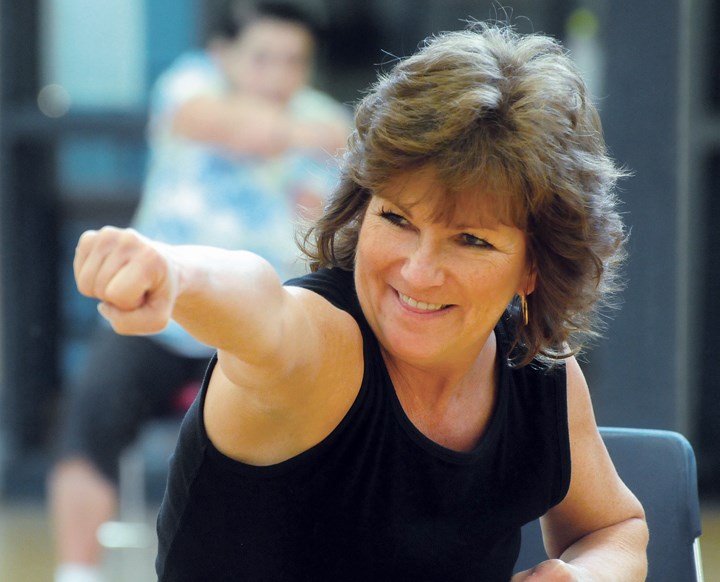As seniors age their gait patterns tend to change.
Often they start walking with a smaller base of support, their feet come much closer together as they walk, their heads and their eyes are down looking at the ground and they're a little stooped because of that, explains Susan Bock Smith, one half of the duo behind Sure Feet, a balance and mobility training program that focuses on fall prevention for seniors.
Bock Smith started the program in 2010 with Judy Bjornson, and in the last four years they have worked with more than 1,200 participants on the North Shore.
"Seniors tend to take smaller steps and shorter strides, and their gait pattern becomes more like a shuffling movement," notes Bock Smith. "It's mostly because of their fear and anxiety of falling that they tend to bring everything in closer."
Typically, people tend to walk with bigger movements, using their arms with a big stride, and that helps them keep their balance. Seniors tend to fear losing their balance, so keep all of their limbs in close to make them feel safer, but that may actually increase their chance of falling, sometimes as much as 40 per cent, explains Bock Smith. When seniors don't have a long stride or a regular stride, their arms don't tend to move, and instead hang by their side. "And the arms play an integral part in your balance because they counteract the movement of the legs," says Bock Smith.
Another reason seniors are at risk for falling is they often look down when walking, which means they often only see about five feet ahead so can't prepare for what's approaching. When they keep their eyes up and are wakefield looking at eye level they have a visual path ahead that is about 20 feet, so they are able to prepare if they see something in their path. That gives them more time to react, rather than having to make sudden turns that could also precipitate a fall.
In addition, when seniors' steps become smaller with a shuffling gait, the distance that they raise their feet off the ground is so minimal that it's really easy to catch their shoe or their foot on something. Getting up quickly in the middle of the night to go to the bathroom and tripping over slippers could happen easily with a shuffling gait.
Bock Smith also recommends to program participants that they follow the 12-second rule when getting out of bed in the middle of the night. If they get up quickly from a lying position to a standing position they may experience a blood pressure adjustment that could make them dizzy. It is recommended they sit on the side of their bed for 12 seconds, get used to the upright position, move their feet around a bit, then go.
"Seniors tend to fall more causing injuries to themselves," notes Bock Smith, who says the program also focuses on educating participants about strengthening muscles, especially in the lower body. Not being active can lead to shortened and tight muscles that lead to pain when trying to stand up straight or walk with a full gait, which may lead to a stooped-over walk with bent knees.
For seniors, a fall can lead to an injury that can lead to a decline physically, mentally or emotionally, notes Bock Smith.
"A huge part is just (to) stay active and social," she says, adding the program encourages socialization, and participants often make friends in class.
Bock Smith says she and Bjornson set out to help other people with their program, but have gotten so much in return.
"We're both pretty excited about what we do. It's pretty great to work in a place where you get such positive feedback."
Most of the classes (called Better Balance) are offered through recreation facilities on the North Shore, including John Braithwaite Community Centre, West Vancouver Senior's Activity Centre, Mollie Nye House, and North Shore Neighbourhood House. For more information visit surefeet.ca.



